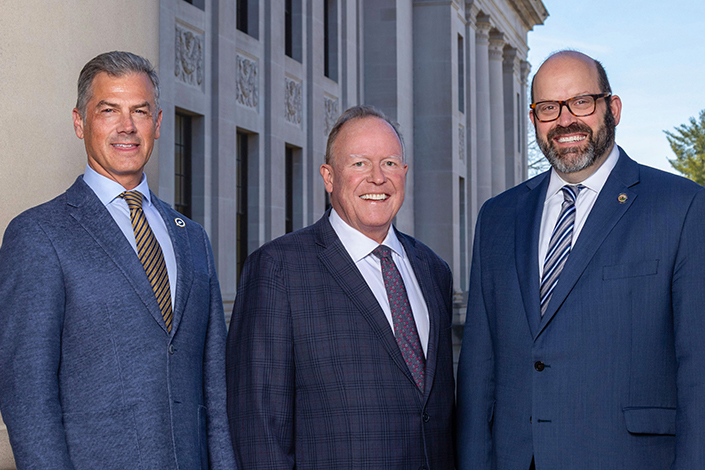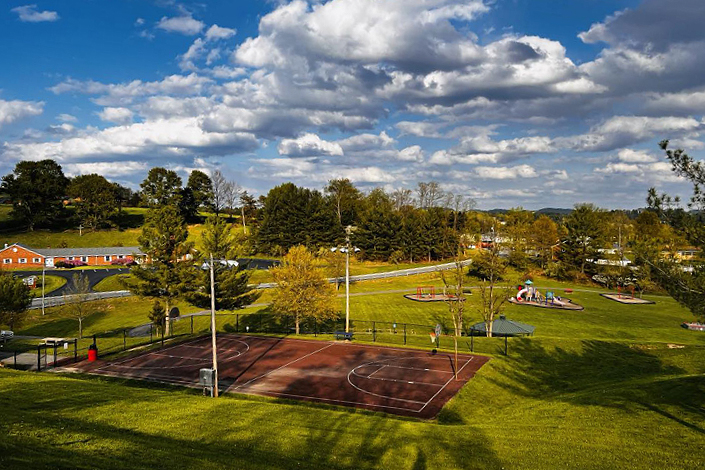Exploring the Vibrant Culture and History
By Doug Maxwell
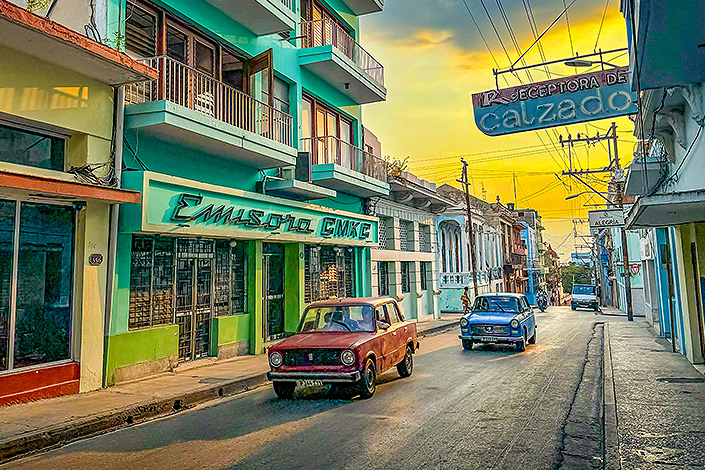
I have been fortunate to visit Cuba on two occasions. Both trips were amazing and eye-opening, and while there, I made social media posts featuring pictures and a few words (the government made cell phones and internet access legal in 2013). Not long after returning from my second trip, I received messages from two friends within a few days of each other. Both were polite and well meaning, but I found the stark differences between the two messages quite interesting.
The first message was from a friend whose opinion and intellect I deeply respect who has never been to Cuba. He politely said I was misguided with my quaint imagery of 1950s cars, trying to convey that the people of Cuba are living a romantic life when they live under the thumb of an oppressive and cruel socialist dictatorship. I paraphrased his message. I understand why he said it, and I agree with the latter.
The second message was from a friend who was born and raised in Cuba and now lives in the U.S. after fleeing with her husband and two small children. It was a long and dangerous journey for them and they, like many other Cubans, are good, hardworking people who will excel and prosper in the freedoms our country provides. She left a lovely message saying my pictures had captured the soul of Cuba and the essence of its people and that it was like being able to see through the bad things the government had done to them so people could see the beauty. Obviously, this made me feel better.
I mention these two friends because I think it is a good example of perspective between those who have been to Cuba and those who only know it from history books. Both feel the same way about what the Fidel Castro regime did to this beautiful island paradise, but when you personally experience the wonderful people of Cuba, it adds a cascade of color to a black and white world found in the pages of history.
Old Havana’s Charm
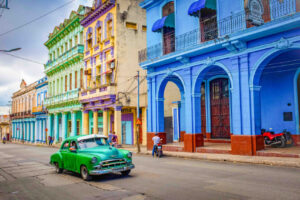
During my first trip, I visited Havana. The city is a stark mix of pre- and post-revolution architecture and representation of the centuries of diverse people who have come to the island. Old Havana is a crowded and bustling place full of noise and food and diesel fumes wafting in your face. It includes a mix of early 20th century art deco, Spanish baroque and neoclassical buildings all slightly crumbling. As you travel farther from Havana, the stark contrast of the Soviet era is noticable. The warm, ornate curves and bright colors of Old Havana are transformed into cold and grey, sharp-cornered and brutal square structures that look like they’ve been transported straight from a Cold War Eastern Bloc country.
Being a U.S. citizen in Cuba is a unique experience. Most people are friendly and want to talk to you. They advise you on where to go and what to visit. They ask you what part of America you’re from and how you’re enjoying their country. With beaming pride in their smiling, sun-drenched faces, they want to tell you about their families and friends who made it to America, where those people live and what they do for a living. It’s both sad and beautiful, as I met so many people who love Cuba with every ounce of their soul and yet are desperate to get out.
Cuba’s Unique Countryside
My second trip was to Santiago de Cuba as well as a rural road trip to the northeast coastal resort town of Guardalavaca. When traveling through the countryside, one is taken back in time. The old cars, horse-drawn wagons and carts made from old, repurposed car parts; farmers working in their fields with basic tools; and the roads that haven’t been maintained for decades are all a testament to the Cuban people’s resilience against Castro’s failures.
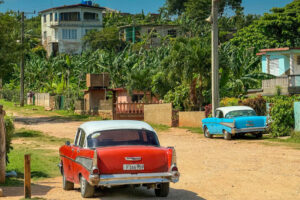
As an American, I was unable to stay in the fancy resort hotels in Guardalavaca with the Europeans and Canadians. This suited me fine as I prefer a more rustic adventure that lets me experience the daily life of the people who live there. A small bed and breakfast in central Yaguajay called the Villa Martinez was simple, comfortable and run by wonderful, hard-working people. There, I got to witness the Cuban life that few Americans see—kids going to school, farmers going to their fields, couples holding hands on their evening walks and, of course, the occasional, expensive modern car with special government tags passing through to the luxury resort a few miles north.
One of the most unique stops was off a rural two-lane road along the southeast coast near Santiago de Cuba. Rivaling anything one could find on U.S. Route 66, I gleefully wandered a roadside attraction called Valle de la Prehistoria, or Prehistoric Valley. Built in the 1980s with the help of inmates from a nearby prison, this Cold War tourist trap features hundreds of life-sized, concrete statues of dinosaurs, mammoths and other extinct mammals, along with various representations of neanderthals and early humans. In the center of the massive park was a restaurant and shop designed by an architect who somehow watched every episode of “The Flintstones” without Castro finding out.
Car Culture in Cuba
What interested me most about Cuba was, of course, the cars. They are well documented and always featured in magazines and documentaries, but when you experience them first-hand, there’s much more to it. What intrigued me was not the fancy, shiny old cars you see in most promotional pictures. Those cars are typically state registered taxis that have a special deal with the government to help keep them running well and looking nice with the proper maintenance and parts. Being a car guy with a partially assembled 1957 Chevy in his own garage, I loved the cars of the everyday Cuban. The old machines with third, fourth or even fifth generation drivers use every bit of ingenuity and creativity to keep them on the road. They are a testament to the spirit of the Cuban people.
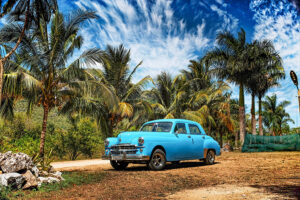
The Cold War is well represented in the cars of Cuba. The American cars of the 1940s and 1950s share the road with Soviet, German and Italian cars of the 1960s and 1970s. Be it a decaying Italian Fiat or a Moskvitch or Lada that would make Leonid Brezhnev look even more annoyed than usual, the winner is very clear. Don’t get me wrong, a person is very happy to have a car in Cuba, but if given a choice, they would prefer American. What cars have the biggest engine bay to weld in a diesel boat motor with a two-speed transmission from a Soviet tractor? American. What cars can easily carry all seven members of your family? American. What cars look stylish even with no hubcaps and several coats of house paint? You guessed it, American.
A late-night taxi ride through Havana to my hotel is the most memorable moment of my Cuban car experience. Much like an illegal cab in New York City, it was an unregistered taxi, the Cuban equivalent of an Uber. They are called Almendrones because they are typically old American cars shaped like almonds. The taxi was driven by a kind man about 10 years my junior. It was a late 1940s, almond-shaped Ford sedan that had been repainted with black paint and a roller. The front bucket seats certainly were not original. My guess is that they came from the same 1990 Kia as the steering wheel and column. Other touches of Asia were the Panasonic car stereo creatively carved into the metal dash and the low chugging sound of the idling Hyundai four-cylinder diesel motor under the steel hood. Sitting in the front passenger seat, I was reminded of how little of a car is needed to still be considered a car. There were no door panels, headliner or carpet, heat or air conditioning, windshield wipers or turn signals. The indicator lights were out, gauges didn’t work and disconnected wires dangled from under the dashboard. There were also no seat belts, but please don’t tell my mother.
As we cruised along the coastal seawall of Havana with the dim street lights overhead, the car shuddered with the occasional pothole, which heavily vibrated that Kia steering wheel with the disconnected but still intact airbag just two feet from the driver’s face. I couldn’t help but think of the journey the old Ford had been on for the last 70 or so years. The hands that built her in the Michigan factory were probably all gone, and the train cars and ship that brought her to Cuba were probably gone. The original owner who first drove her when she was brand new was also probably gone, and Castro, the man who sadly made it necessary to keep the old Ford going, is certainly gone.
When Cuba is eventually able to catch up to the modern world, there are many who believe the old cars should be scrapped because they are symbols of oppression. Whether they realize it or not, they are suggesting works of historical art be destroyed. Art is often born from struggle, conflict, oppression and suffering. Art is everywhere in Cuba—the music; graffiti on the walls; colorful, old buildings in vast need of repair; and, without a doubt, the cars. The love and creativity born from the necessity to keep them going is humbling to see, and they are symbols of human resilience.
There are those who think going to Cuba and photo-graphing the cars and the people is a kind of voyeurism. These are valid feelings, but the people of Cuba are a strong and beautiful people. Their old cars are symbolic of their struggle against the government oppression they suffer under. They should be documented so the world better understands, and every tourist dollar or euro put into the hand of a Cuban is hidden away and saved to help them eventually escape to the land of opportunity.
To close, I offer the words from my beautiful Cuban friend.
“I came to America looking for a future for my family, which had become impossible in Cuba,” she says. “I will always love Cuba, but there was no way to continue to live there. I am doing my best to contribute to this new society since I could not contribute to mine anymore.”






